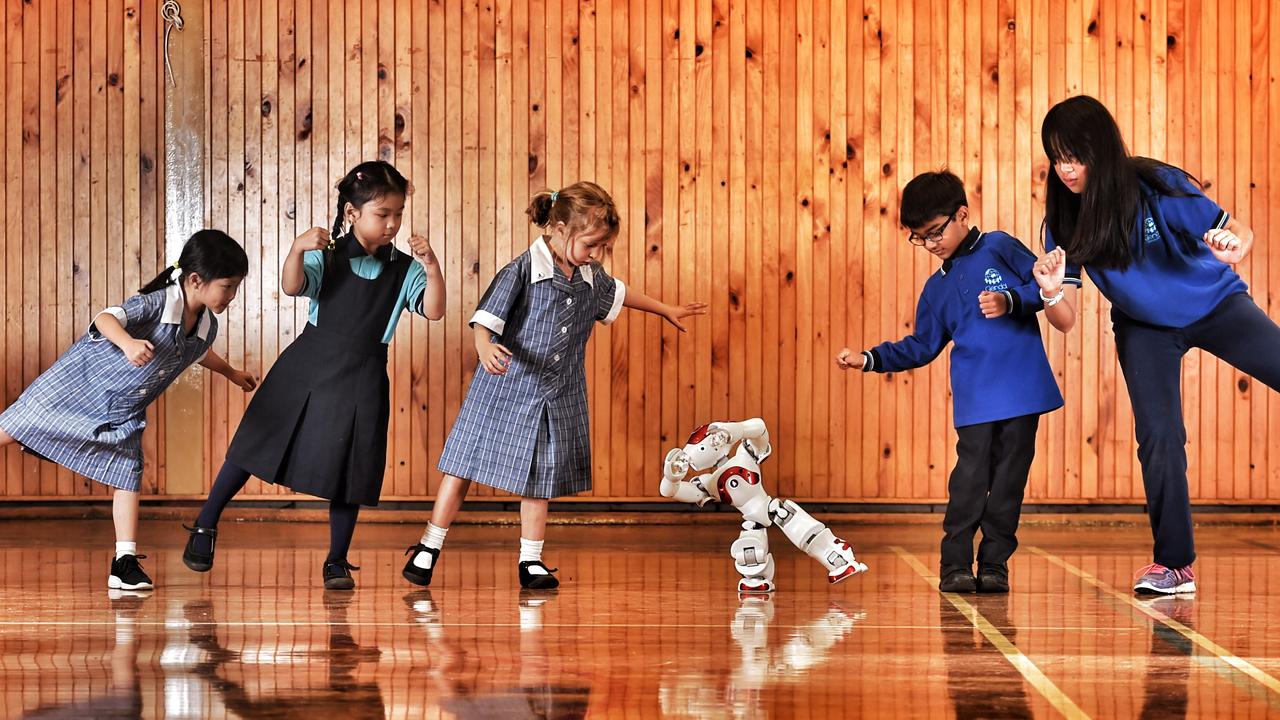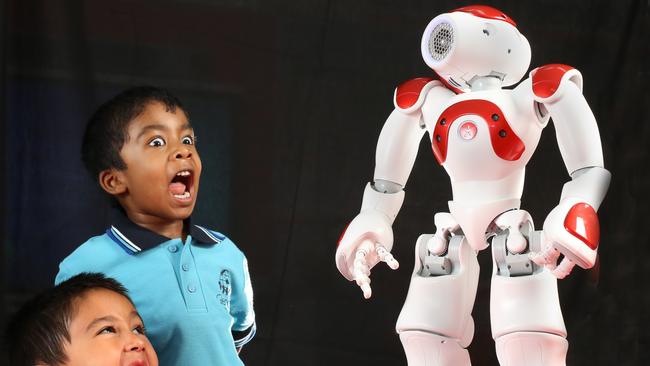Robot teachers take over classrooms around the world
In classrooms all around the world, a new type of teacher is helping students learn. And it’s not a human. It’s a robot. Would you like a robot teacher?

READING LEVEL: GREEN
There's a new kind of teacher in class. And it’s not a human. It’s a humanoid* robot.
In a prep class at Glendal Primary in Glen Waverley, Victoria, the robot on the teaching staff is 30cm tall and helps improve the preps’ speaking and listening skills.
The robot can also dance to the Village People’s song YMCA.
Now grade 5 students at Glendal are working on programming* the robot to have conversations with the school’s youngest pupils.

Students must introduce themselves, wait until the robot’s eyes turn blue and be patient while it speaks before answering in a loud and clear voice, otherwise they get no reply.
Jessie, 10, has been programming the robot to teach the preps how to better communicate, but believes it’s only the beginning.
“I think they will start teaching,” the grade 5 student said. “I think they’re really cool and they have endless possibilities.”
In fact, robots are already teaching in a few classrooms around the world. In a primary school in Tampere, Finland, the new language teacher, Elias, is a robot.
Elias, like the Glendal robot, can dance. Its specialty is Gangnam Style.
The 30cm-high robot is able to understand and speak 23 languages and uses software that allows it to understand students’ needs and encourages* learning. In Elias’ trial in its current school, however, it communicates in English, Finnish and German only.
The robot recognises the pupil’s skill levels to ask harder or easier questions. It also gives feedback* to teachers.
Some of the human teachers who have worked with the robots see it as a new way to get children interested in learning.
“The main idea is to get the kids involved and get them motivated* and make them active. I see Elias as one of the tools to get different kinds of practice and different kinds of activities into the classroom,” said teacher Riikka Kolunsarka.
Elias is one of four robots being tested in classrooms in this part of Finland. There’s a maths robot, used in three schools, called OVObot. They are all blue, about 25cm high and look like owls.
The aim of the trial is to see if the robots can improve the quality of teaching.
In fact, one education expert in the UK thinks this will certainly happen.
“Everyone can have the very best teacher and it’s completely personalised*,” said Sir Anthony Seldon, who is head of the University of Buckingham.

“The software you’re working with will be with you throughout your education journey.”
Sir Seldon was also asked if he was sure the human teacher’s job would become less important than the robot’s.
“I’m desperately* sad about this but I’m afraid I am.”
In Norway, robots are working as students. Children who are sick and can’t come to school are able to have a robot come to class for them. The robot is in class watching and listening and the student sick at home or in hospital can see and hear what the robot can see and hear.
So, far the feedback from students in Elias the language robot’s class in Finland has been positive.
“Well, it is fun, interesting and exciting and I’m a bit shocked,” said Abisha Jinia.
Glendal students like their robot too.
“I think it’s fantastic,” said Eshan, 5. “I like all the dances and we did tai chi.”
Glendal Primary Principal Deborah Grossek hoped the robot would improve students’ technology skills.
“Children can do a whole lot more than we give them credit* for,” she said.
IF YOU LIKED THIS STORY, YOU MAY ALSO LIKE THESE
Aussie students on Mars robot mission
Greens want only electric cars by 2030
GLOSSARY
humanoid: looks a bit like a human
programming: putting information in to tell it what to do
encourages: helps
feedback: gives information back
motivated: wants to do it
personalised: made just for you
desperately: really strongly
credit: admit someone did something good
LISTEN TO TODAY’S STORY
CLASSROOM ACTIVITIES
1. Humanoid Robot
After reading the Kids News article, in one column write what the robot is currently teaching the preps at Glendal Primary School, and in the other column some new ideas of how the grade fives could program the robot teacher to teach the young learners.
Column 1: CURRENTLY TEACHING
Column 2: OTHER PROGRAMMING IDEAS
Extension: How else could you use these robots in schools?
Time: Allow 15 minutes
Curriculum links: English, Digital Technologies
2. Robot v Real
With all this fantastic technology, teachers may be getting worried that robots will take over one day and there won’t be a need for real-life teachers. State five reasons why a human teacher will always surpass a robot teacher;
State three reasons why robots could enhance student learning;
Extension: Write a short note to your teacher letting them know what they do well and why you like them as your teacher.
Time: Allow 15 minutes
Curriculum links: English, Critical & Creative Thinking, Personal & Social
VCOP ACTIVITY
After reading the article, with a partner, highlight as many connectives as you can find in pink. Discuss if these are being used as conjunctions, or to join ideas and create flow.
Take a blank sheet of paper and draw a grid with six spaces on it.
Pick six different connectives to use, some easy and some challenging ones.
Write a different connective in each of the 1-6 grid spaces.
Think of a topic … School Holidays
Roll the dice and whichever connective you roll, you have to try and use to create a compound sentence about the topic.
For example, I love school holidays BECAUSE I get to go and stay at Nana’s house.
Take turns, going back and forth. After three turns each, change the topic.
IN ONE SENTENCE, TELL US WHAT YOU THINK ABOUT THIS STORY
Please do not use one-word answers. Explain what you enjoyed or found interesting about the article. Use lots of adjectives.

